


CREATIVE
CLEAR
SENSUAL
CLEAR
SENSUAL

Error get alias
LegalPics Survey about Legal Design in Russia

Challenge
LegalPics Consulting company surveyed more than 100 Russian lawyers. The target was to define the legal design and its applicability awareness level. The respondents were asked to answer questions about their attitude to legal design, their work process and communication with documents users.

Problem
Lack of relevant research on the subject



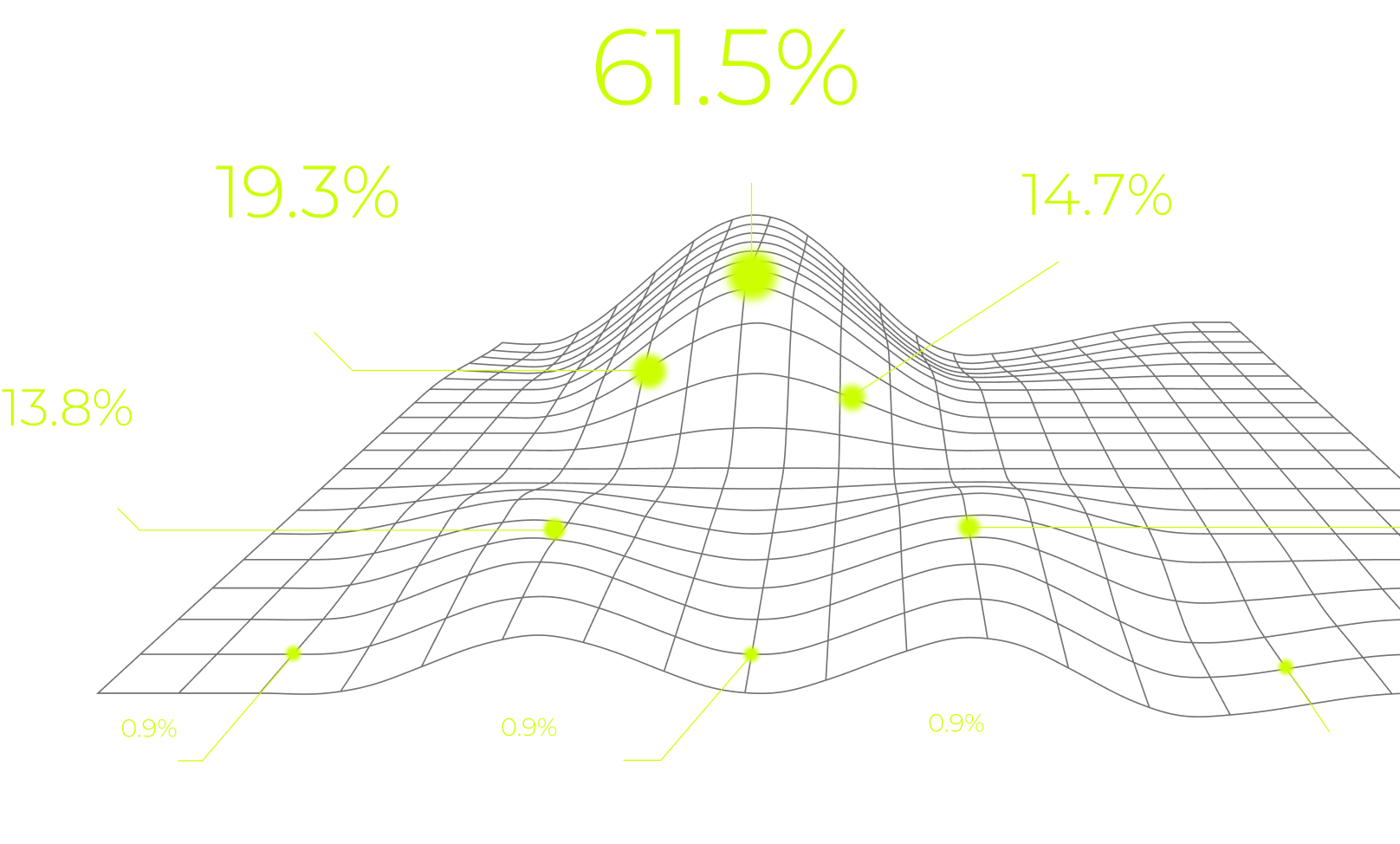
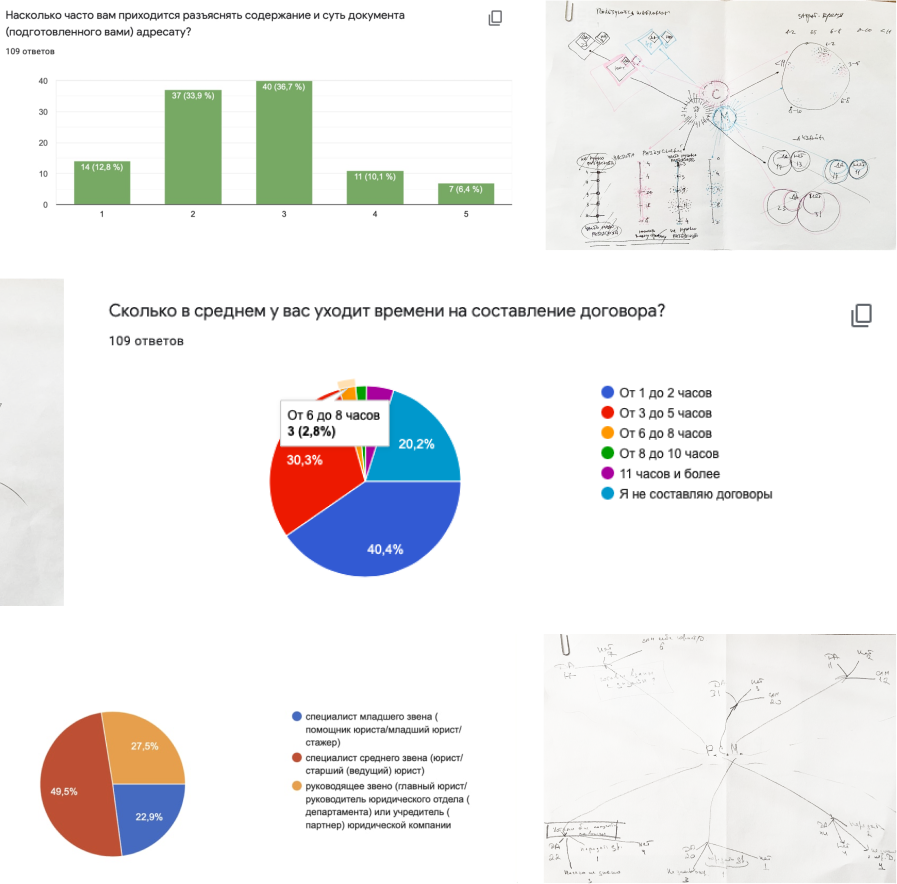

Result
Most respondents are aware about legal design. The term is mostly interpreted as a tool making the documents available for a user.
Most lawyers use the templates in document creation. Possibly that is why many lawyers spend less than 5 hours to make a contract. Also, according to the survey’s results, the lower the job position is, the less respondents feel the need to make contracts with the help of the professional designers.
Most respondents said that they had to clarify the document’s idea for its recipient and the time of this work hasn’t been paid. Therefore, extremely difficult documents increase the costs.
The respondents believe that the problems in question can be solved with the Legal Design tools. The Legal Design approach can increase the communication efficiency and have a positive impact on the company’s revenue growth.
Most lawyers use the templates in document creation. Possibly that is why many lawyers spend less than 5 hours to make a contract. Also, according to the survey’s results, the lower the job position is, the less respondents feel the need to make contracts with the help of the professional designers.
Most respondents said that they had to clarify the document’s idea for its recipient and the time of this work hasn’t been paid. Therefore, extremely difficult documents increase the costs.
The respondents believe that the problems in question can be solved with the Legal Design tools. The Legal Design approach can increase the communication efficiency and have a positive impact on the company’s revenue growth.
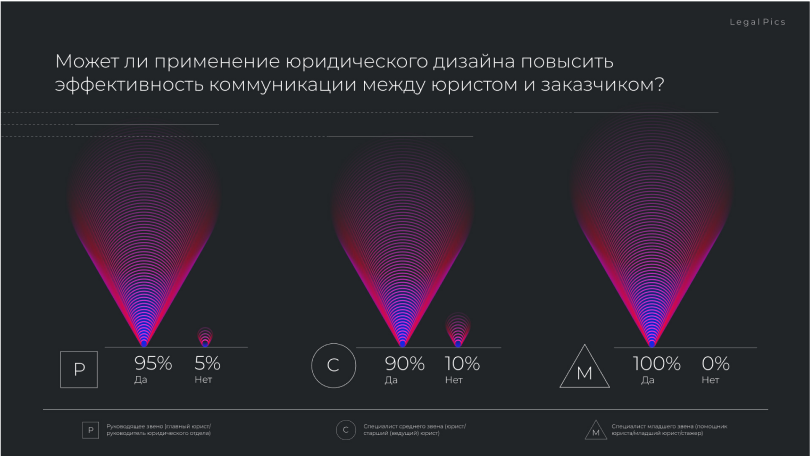
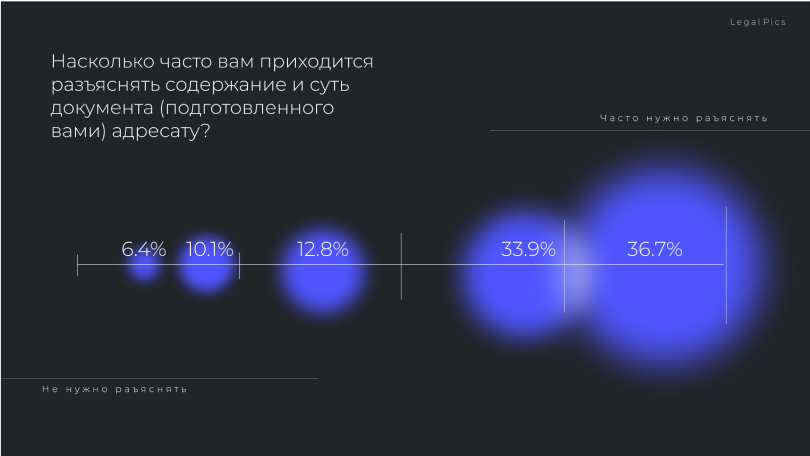
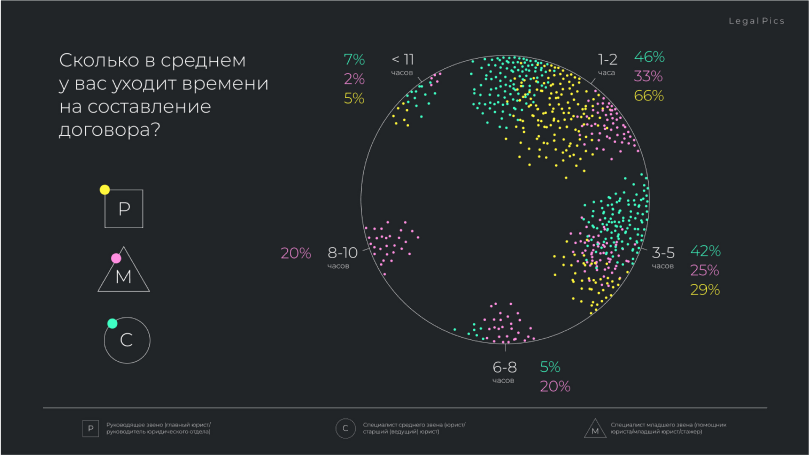
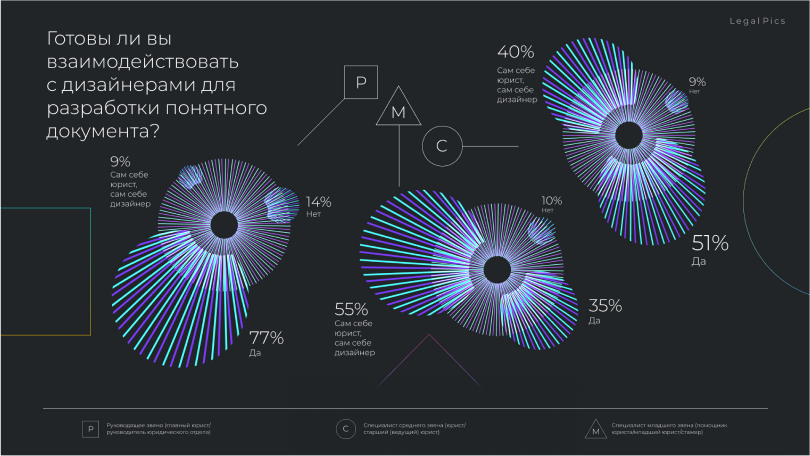
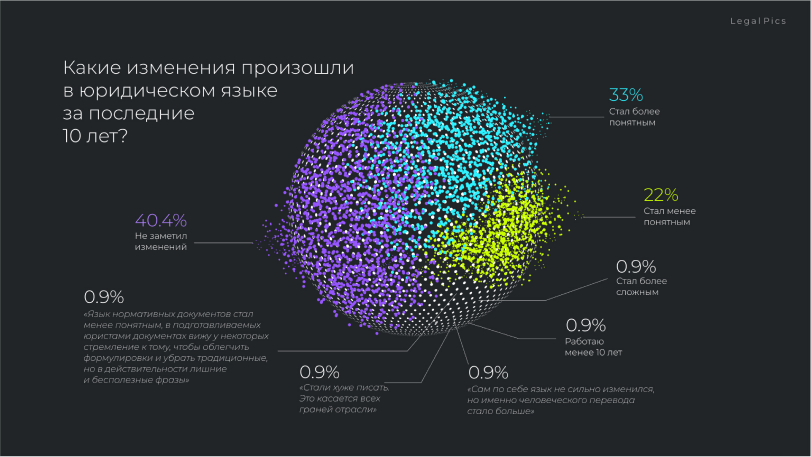
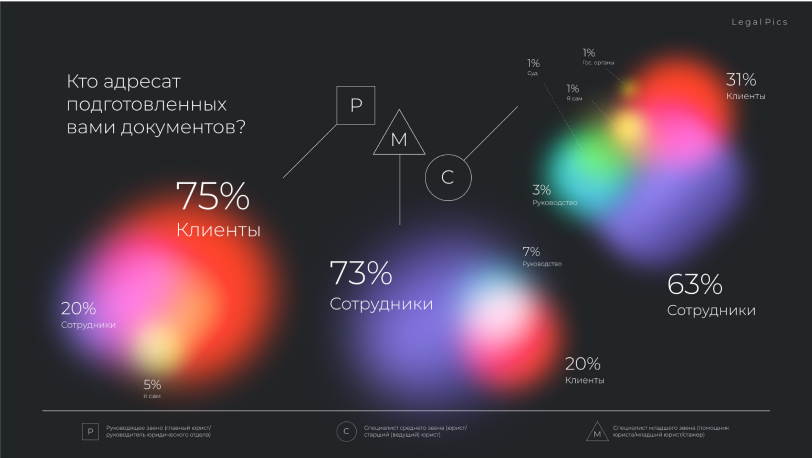
LegalPics Insight
The part of the legal community participates in Legal Design lobbying. However, there is still a large conservative audience. The insufficiency of the data and research of Legal Design are the reasons for this phenomenon.
Lawyers interested in Legal Design hold events & discussions, create content. We have decided to make our contribution to the common cause.
Lawyers interested in Legal Design hold events & discussions, create content. We have decided to make our contribution to the common cause.
Feedback
Legal Design culture evolves and is used in business processes more often. However, the value of this approach tool is not commonly considered. The survey has proved the importance of the Legal Design approach implementation in Russia in terms of the company-client communication efficiency increase.



